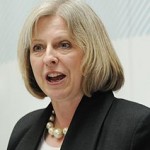
The latest example of this is the coverage of the appointment of Dr Patricia Greer by Bristol’s newspaper of (warped) record, the Bristol Post.
“New Bristol bureaucrat to be paid more than the Prime Minister“, thunders the headline in a piece posted yesterday on the paper’s website.
This is reinforced in the article’s first 2 sentences.
Bristol’s newest public servant is to be paid a whopping £150,000 a year – more than Prime Minister Theresa May.
The chief executive of the West of England Combined Authority will be paid more than double the amount received by her boss, Metro Mayor Tim Bowles.
First a bit of background: the West of England Combined Authority (WECA) is made up of three of the local authorities in the region – Bath & North East Somerset, Bristol and South Gloucestershire. North Somerset decided not to join in this additional level of local bureaucracy, but has said it will co-operate with WECA on transport matters.
WECA was imposed top-down by central government in the last round of so-called “devolution”. There was no referendum to legitimise its establishment, merely the usual inadequate consultation from the local authorities involved. WECA comes under a so-called “Metro Mayor”, the incumbent being Tory Tim Bowles who was elected in May 2017 on a turnout of less than one-third of the electorate.
Its detractors refer to WECA as Avon County Council Mk. 2, a reference to a previous unpopular round of local government reform.

However, to my way of thinking, the comparison of senior public sector employees’ remuneration with the Prime Minister’s pay is erroneous on a number of counts.
In the first place both Prime Minister and the Metro Mayor are elected offices: their holders find their way to their desks via the ballot box. WECA’s chief executive is appointed, presumably by a small body of individuals; the electorate has no say in who gets their feet under the big desk on the deep pile carpet.
Secondly, there are many appointed officers in the public sector whose pay is more on a level with those in the private sector. Take for example the large quantities of gold showered on the vice-chancellors of English universities such as Bath, which has resulted in resignations from that institution’s council.
Another comparison that could be taken into account is budgets. WECA will be receiving funding of £30m a year for 30 years, which is really just petty cash in public sector terms when stood next to the 2015 figure of running the NHS (£115,398m. Source: Cabinet Office).
Perhaps a fairer comparison would be with the PM’s senior civil servant, namely the Cabinet Secretary, the country’s most senior civil servant, who acts as the senior policy adviser to the Prime Minister and Cabinet and as the Secretary to the Cabinet. The post is currently held by Sir Jeremy Heywood, for which he receives an annual salary of £195,000.
Whilst this may be a fairer comparison, there’s one major drawback. Whereas most people could readily identify the Prime Minister when questioned, how many members of the public could readily name the Cabinet Secretary.
The media deal with certainties and the familiar, hence measurements related to the size of football pitches (and Wales! Ed. and, by extension, comparisons of those in high office with the PM’s pay packet.